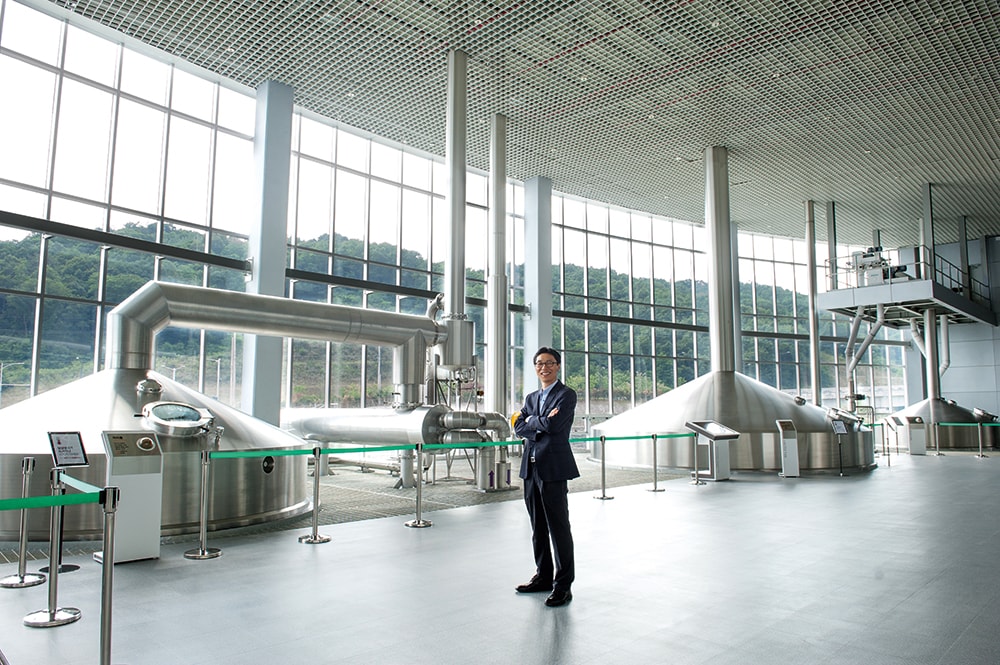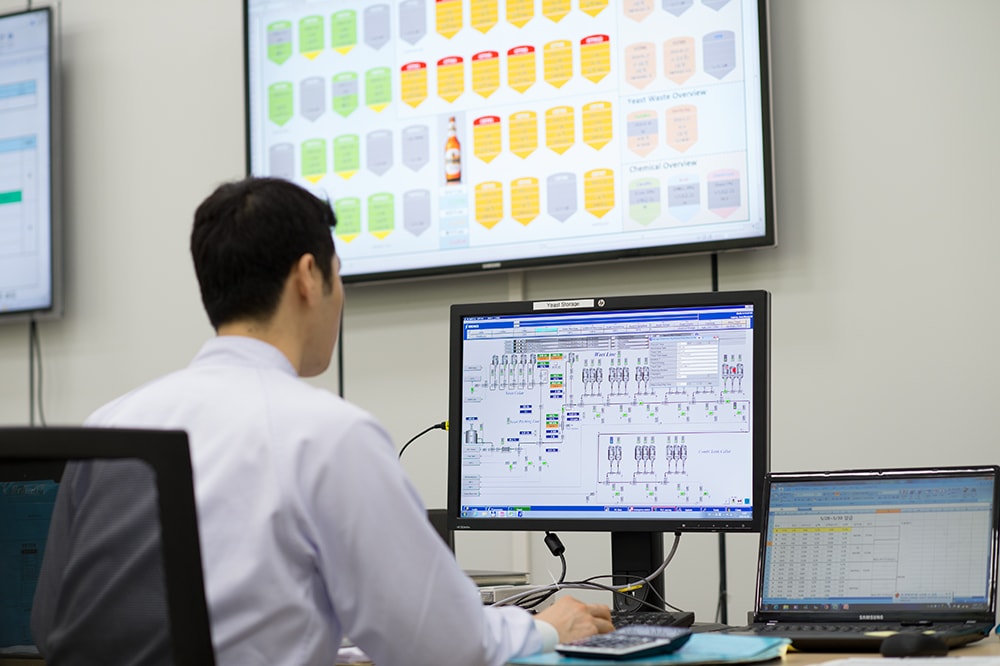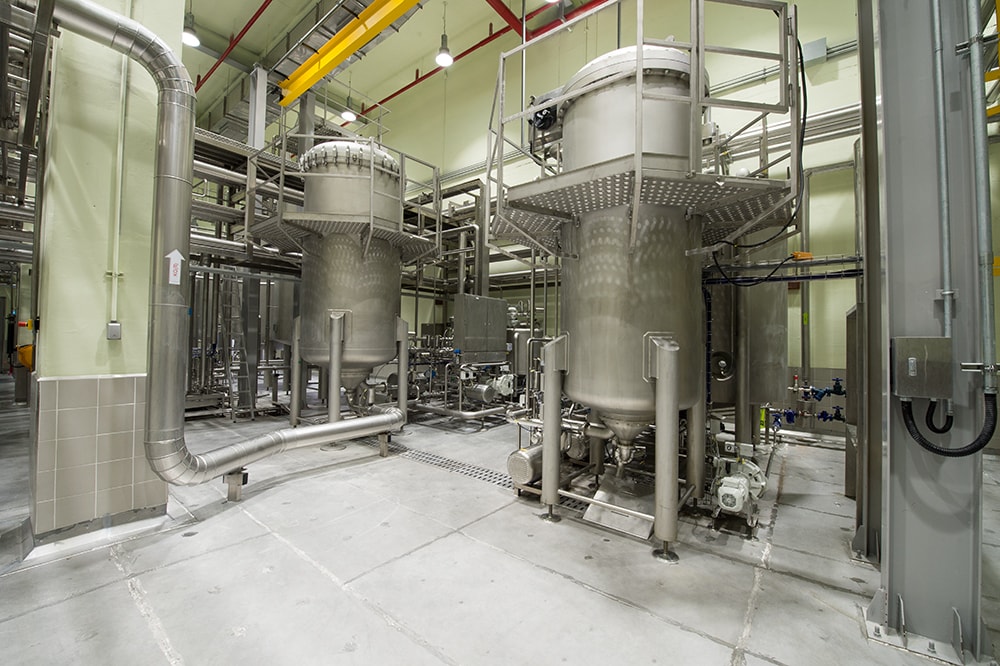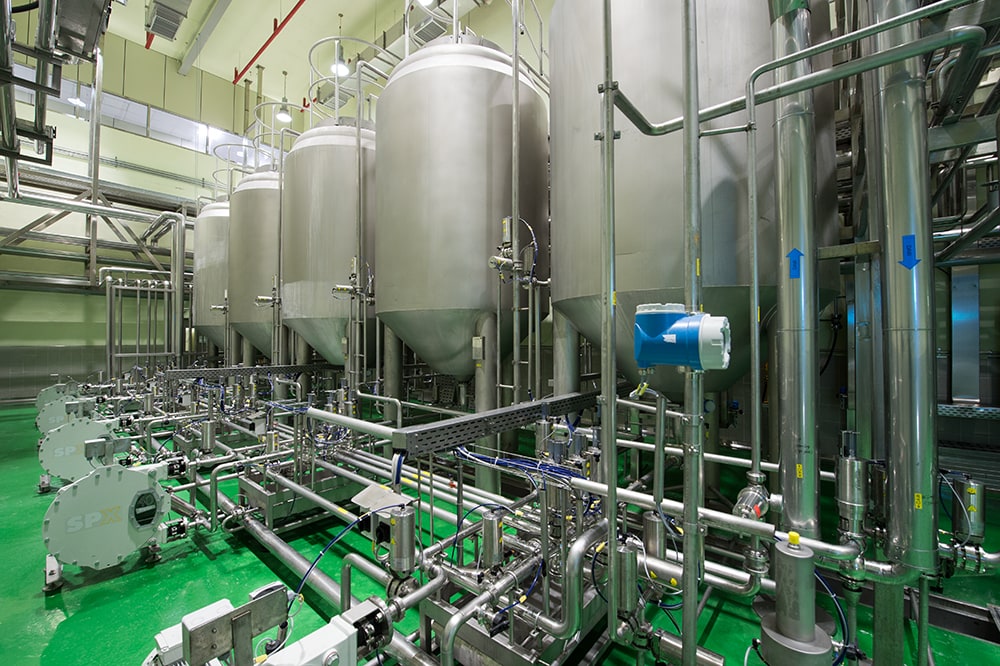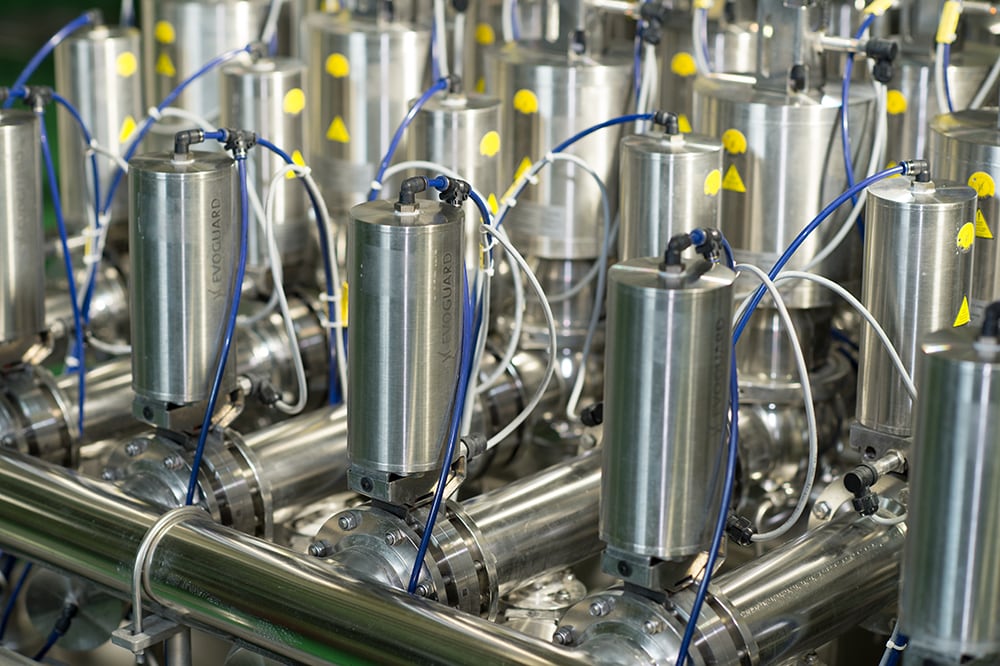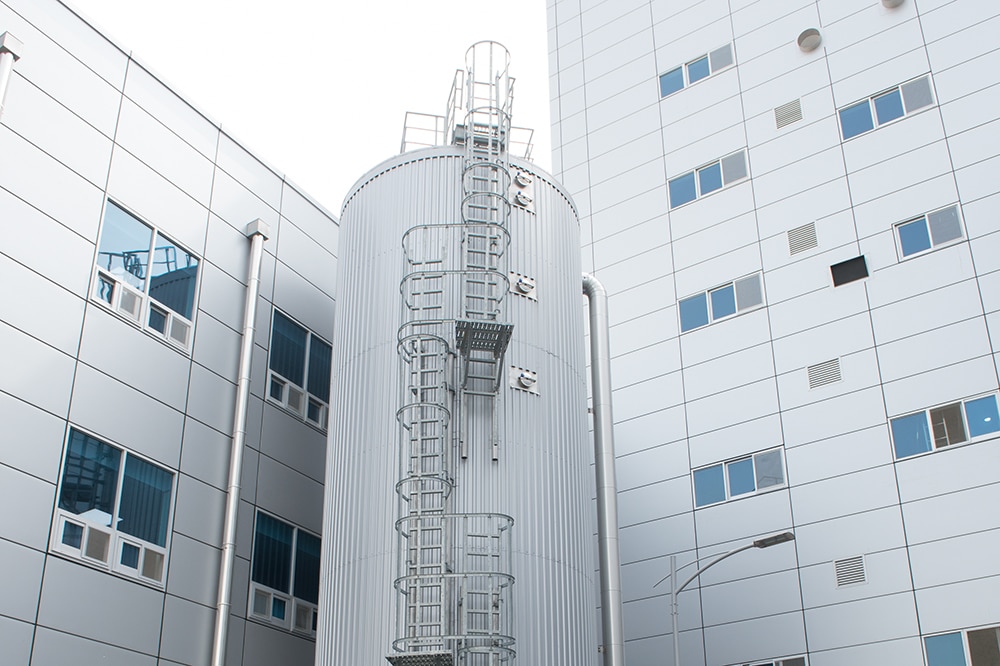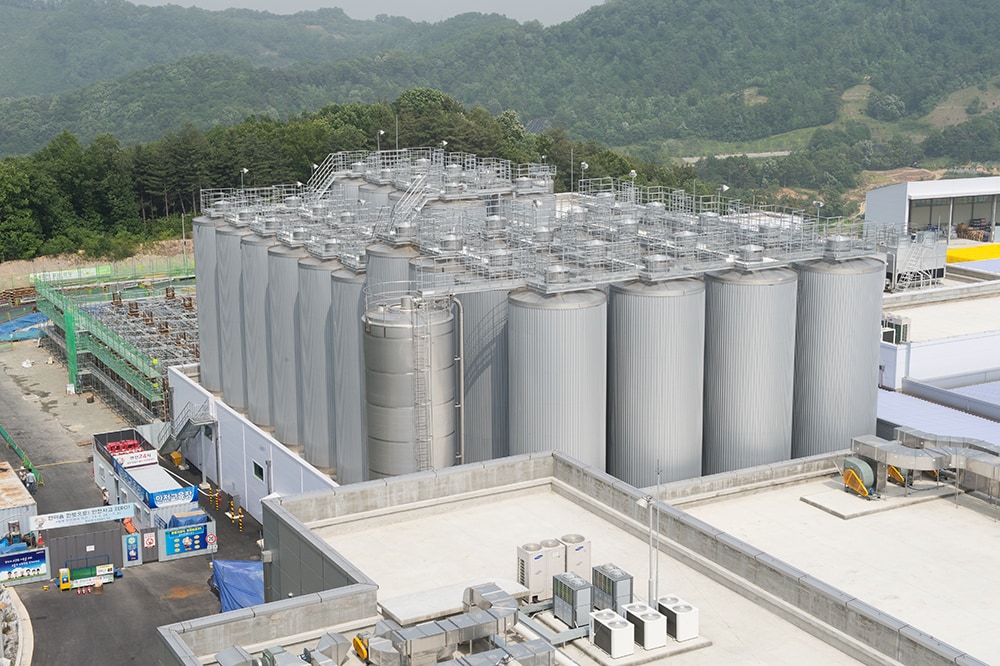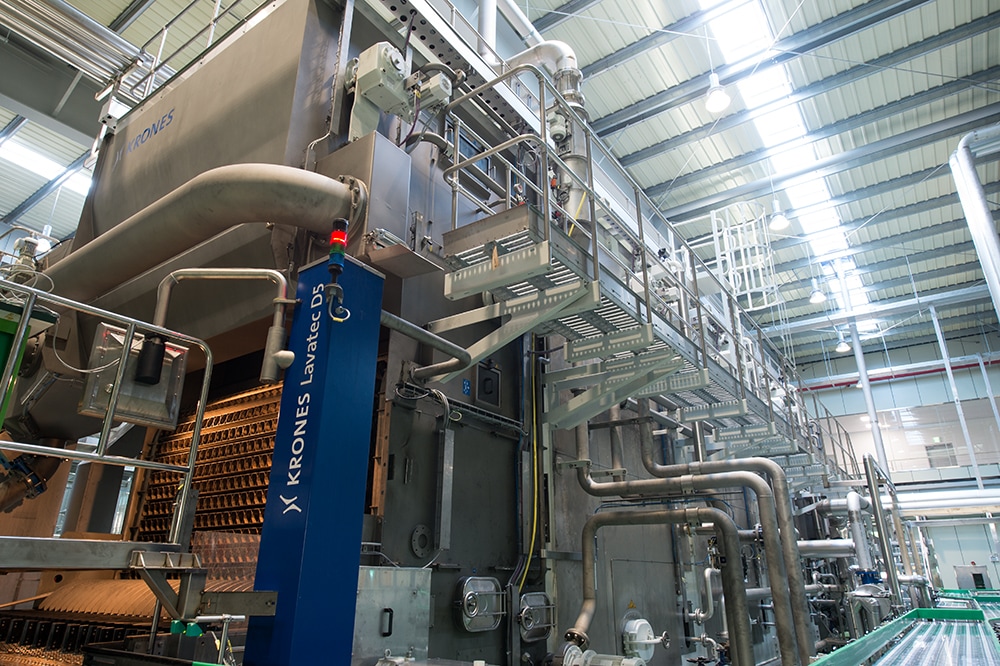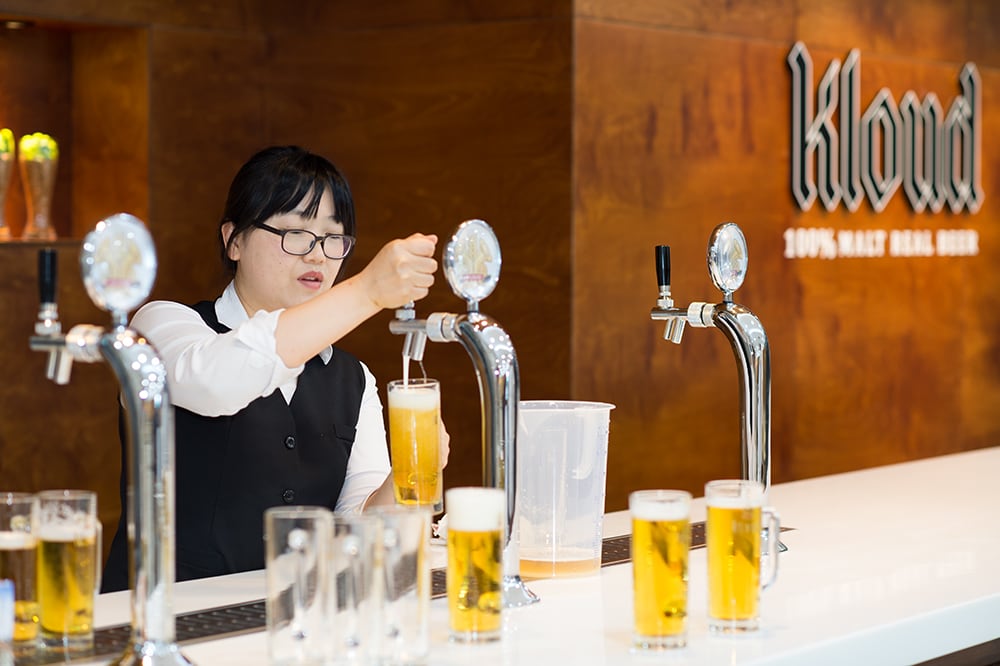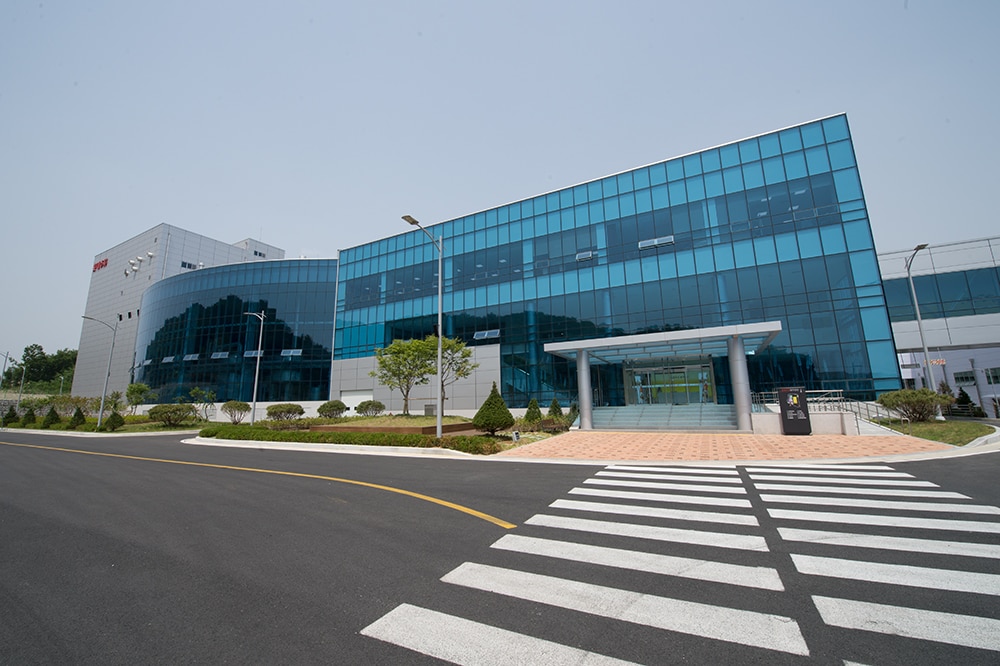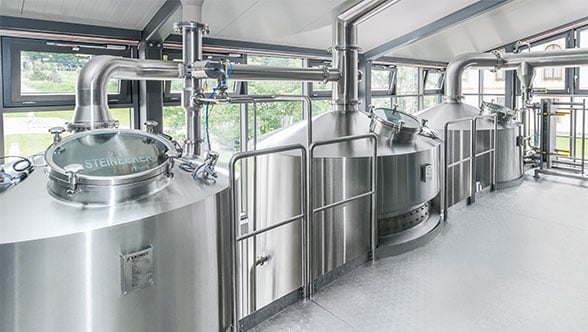With its newly built greenfield brewery and the market launch of a fresh beer brand, the South-Korean beverage producer Lotte Chilsung Beverage has broken up the existing beer duopoly in this country. Since the beginning of 2014, the watchword has been: “Make way for the new ‘Kloud’ brand!”
Ever since the Chilsung Cider lemon/lime soft drink was launched in 1950, the subsidiary Lotte Chilsung Beverage has evolved into one of Asia’s biggest beverage producers in the CSD, juice, water, coffee, tea and spirits segments, in the CSD segment not least thanks to its role as the Pepsi-Cola licensee for Korea. Beer had hitherto been absent from the portfolio. South Korea’s beer market is currently dominated by a duopoly of Oriental Brewery and HiteJinro. Both of these can look back on a chequered history, and an abundance of interconnections.
In mid-October 2013, the first brew was produced at the new facility. Lotte had built the new brewery in a newly designated industrial estate in Chungju, a city in central South Korea with a population of 200,000. Another of the Lotte Group’s subsidiaries called Lotte Engineering & Construction acted as general contractor for the construction work. Lotte ordered the entire process technology from Krones. While the brewhouse has already been dimensioned for an annual capacity of one million hectolitres, the cold section, with the fermentation and storage cellars, has for the time being been equipped only with tanks for a capability of 500,000 hectolitres.
The three filling lines, for cans (30,000 cans per hour), returnable glass bottles (36,000 bottles an hour) and kegs (90 kegs per hour), were configured by Lotte Chilsung Beverage itself with kit from local and European manufacturers. This also includes a whole series of Krones machines, like a Lavatec D5 double-end bottle washer, a Topmatic labeller with a Checkmat label-position monitor and a Contipac packer. Two of the filling lines have also already been dimensioned for an annual filling capacity of one million hectolitres, it’s just the speed of the kegging line that still needs to be doubled, to 180 kegs per hour.
Using top-notch German brewing technology
This dedicated quality drive with its 100-per-cent-malt beer, and the goal of becoming the quality leader on Korea’s beer market, were conditional on the use of top-notch German brewing technology in our brand-new brewery. The new Steinecker brewhouse has been dimensioned for a brew measuring 400 hectolitres of cold wort. Malt prepared with conditioned dry milling is used for mashing. The stainless-steel brewhouse consists of two ShakesBeer EcoPlus mash tuns, a Pegasus lauter tun with a diameter of 6.5 metres and a capacity of 664 hectolitres, a product holding tank and a whirlpool. The Stromboli wort copper with a traditional internal boiler is equipped with a vapour condenser, which utilises the evaporation heat. A two-stage wort cooler in its first stage serves the EquiTherm system’s energy storage tank, located outdoors and holding 1,799 hectolitres net. The energy stored here in the form of hot water is used for heating up the mash tun. The EquiTherm system is very energy-efficient. Energy is a vital factor in South Korea, even though at Lotte quality and taste are the top priorities, and cost-cutting considerations take second place. Steam is only required for the wort copper. Otherwise, hot water at 98 degrees Celsius is used. What is not needed for the mash tun, can be used in the CIP system for the bottling operation, as rinsing water for the canning line, or for the bottle and can warmers. Planning is also to link the bottle washer up to the hot-water supply system.
Expansion by 28 combined tanks
The yeast cellar consists of five yeast tanks, a waste-yeast tank, an autolysis tank and a propagator. For fermentation and storage, Lotte in the first stage draws a distinction between 18 fermentation tanks, twelve storage tanks and six combined tanks, which can be used both for fermentation and for storage. Each of these tanks holds 1,600 hectolitres, equivalent to four brews. Two more combined tanks have been dimensioned for one brew each. The TwinPro system has been used for the piping throughout the cellar. Three tanks each have been grouped in one loop, and linked up to one valve block. The double-seat valve racks installed here can be used to link the individual tank groups up to the main pipes, like the wort, young-beer or yeast harvesting pipes. With a consistently high level of hygiene, this concept contributes towards reducing investment and operating costs in the fermentation and storage cellar.
For the operators, it was also a first to work with the Botec F1 automation software package from Krones. For this purpose courses at the Krones Academy were attended.
Build up the market step by step
Lotte intends to try and build up the market step by step. When at the end of 2014, the second construction phase with a capacity of then a million hectolitres will have been completed, engineering work on a second brewery will already have started, to be erected just a few kilometres away from the first and planned for 2.5 million hectolitres in the first stage, and five million hectolitres in the second. Quite a different dimension.
Wouldn't that be something for you too?
